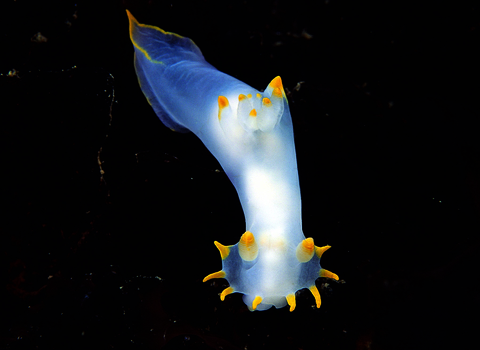
Paul Naylor
Yellow edged polycera
The UK is home to so many incredible sea slugs, like this elegant nudibranch.
Scientific name
Polycera kernowensisWhen to see
April - October.Species information
About
The yellow edged polycera has a translucent body with dashes of bright yellow. It appears as if it was created by a talented artist!The scientific name, Polycera kernowensis for this slug comes from the Greek words “polys” and “keras”, meaning “many” and “horns”, while “kernowensis” is derived from the old name for Cornwall, where the slug is commonly found.
How to identify
Translucent white body with bright yellow tips to confined to appendages and dorsal line on tail. The two lobes either side of the gills (half way along the slug’s back) are simple, without tubercles and with a single point. Very similar species to Polycera faeroensis and Polycera quadrilineata.If you are recording your sightings as part of a recording scheme, make sure to include clear photographs to help verifiers confirm your sighting.
